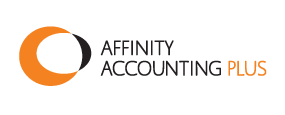Most Australians with a good credit history and a regular source of income have little difficulty in accessing credit when they want it. However, with different credit products now available, borrowers are not sure which one is best for their particular situation. Personal loans and credit cards are the two loan products that most people know and understand, but with personal loans running nationally at $59 billion and credit cards at $41 billion, there is not a huge difference in popularity between the two.
Credit Card Interest Rates Higher Than Personal Loans
The big difference is in the interest rates that borrowers pay on these loans. Currently, lenders are charging an average of 13% on personal loans and 17% on credit cards. The advantage of a personal loan is that it is usually taken out for a specific purpose over a certain length of time, and when it is fully repaid, the debt is discharged. A credit card, however, is open-ended with a balance that fluctuates up and down as purchases are charged to it, and repayments made against it.
Accountants and financial advisers are often asked by their clients which is the best option. There is no definitive answer as it depends on the purpose of the loan and the type of spending for which it is being used. As the experienced accountants at Affinity Accounting Plus tell their clients, both personal loans and credit cards can be very useful when they are used correctly.
Personal Loan Repayments Structured to Discharge the Debt
Personal loans are generally used for large, one-off type purchases such as motor vehicles, caravans, boats, perhaps some large furniture items or other similar needs. It requires only one loan contract with specified monthly or fortnightly payments to be made until the debt is cleared. If more money is needed for something else, typically, another loan application would be required. Interest rates on personal loans are lower than credit cards and there is an end to the arrangement, usually not more than five years.
Credit cards are a convenient, ready source of quick cash for all kinds of purchases. They are like a line of credit where money is accessed as needed. If the entire balance owing on the card is paid at the end of every month the higher interest rate is not too much of a concern when balanced against the convenience. People get into trouble with credit cards when they only pay the minimum required and keep spending until the maximum upper limit of the card is reached. The high interest rates on the maximum balance then become a financial burden.
The advice that Affinity Accounting Plus give their clients is that the larger the item, the more effective it is to use a personal loan. Credit cards are more suited to retail purchases over the counter as they can be used immediately, where a personal loan has to be set up in advance. In both cases, discipline is the key to using the funds wisely and not allowing personal debt levels to become overwhelming. Visit www.affinityaccountingplus.com.au for information about their accounting services.

